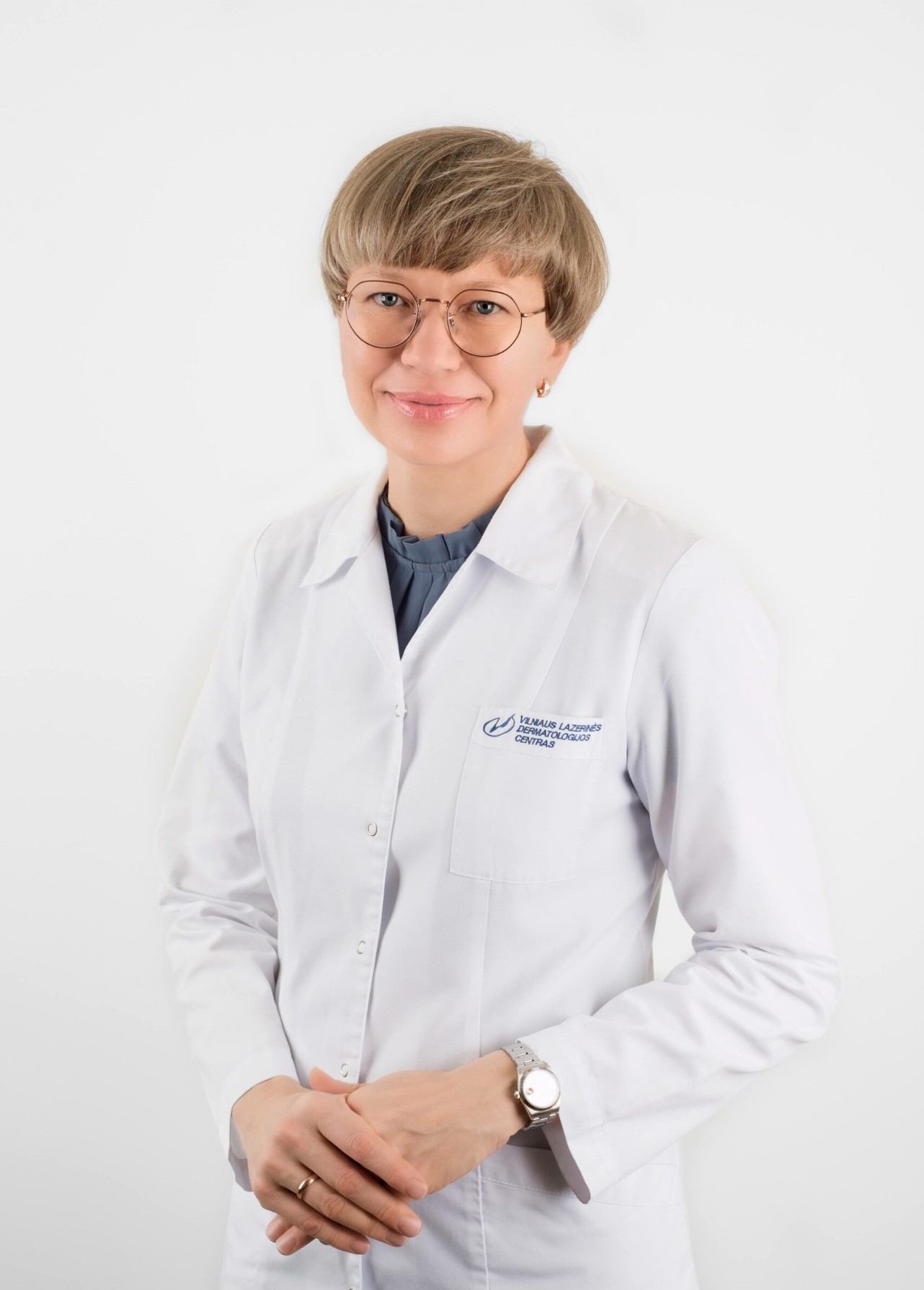
Even very similar-looking nail lesions can be caused by completely different reasons. It is not always possible to determine the exact cause of the lesion from the appearance of the affected nail alone, let alone the specific causative agent of the fungal infection. Many other nail diseases present with symptoms similar to those of nail fungus, such as:
- Nail psoriasis. Psoriasis is a chronic inflammatory skin disease characterised by a rash of distinct red plaques covered with silver scales. It affects not only the skin but also the joints and nails. Psoriatic nail lesions are characterised by onycholysis (detachment of the nail from the nail bed), pongy masses, discolouration of the nail, small pitting on the surface of the nail plate etc. As the symptoms of nail psoriasis are very similar to those of nail fungal infections (especially when the changes occur only in one nail), additional tests are performed to clarify the diagnosis.
- Trauma. Wearing uncomfortable footwear and frequent trauma to the toes can cause the nails to thicken and change colour. Acute trauma is characterised by post-nail haemorrhage, which makes the diagnosis of nail changes a little easier. When the nails have been traumatised for a long period of time, there are no obvious signs of trauma, and the resulting changes in the nail plate can be differentiated by examination.
- Flat lichen planus. This is an inflammatory disease of unknown origin affecting the skin, mucous membranes, hair and nails. As many as 10-25% of patients with lichen planus have nail lesions. The most common are longitudinal stretching, flattening of the nail plate and longitudinal cracks. Onycholysis and ponlaginous masses occur when the nail bed is damaged. Nail lesions progress rapidly, and if left untreated, risk permanent loss of nails.
- Contact dermatitis. As the dermatitis progresses to a chronic form, especially on the hands, the nails become thickened, yellow, with the appearance of pontic masses, and the surface of the nail may become rough. These nail changes can also be caused by allergies to manicure products and artificial nails.
In addition, certain medications can also cause nail changes. For example, chemotherapeutic agents, antibiotics of the tetracycline group, psoralens, antimalarial drugs can cause nail changes resembling a fungal nail infection.
To determine the exact cause of the nail lesion, special tests are carried out, such as nail microscopy and microbiological examination (culture). The microscopic examination assesses the presence of fungal particles (e.g. hyphae) in the damaged nail fragment. However, nail microscopy does not determine the exact type of fungus.
The best treatment results are achieved when treatment is tailored to the exact type of infectious agent. To this end, a nail fragment is cultured in a special medium and tested for its sensitivity to antifungal drugs. The culture is essential for the prescription of medical treatment, as the rarer forms of the fungus are becoming more frequent and resistance to conventional drugs is increasingly being detected. Unfortunately, the results of this test have to wait about 4 to 6 weeks. However, it is one of the most reliable diagnostic methods for nail fungus.
The microscopic examination of the nail plate is simple: the technician uses sterile scissors to cut off part of the nail plate (if present), and also to take the cornified masses that accumulate under the nail for examination. It is advisable to perform the test if the patient has not applied antifungal ointment or varnish to the nail for 3 weeks. We recommend that the microscopic examination is accompanied by a culture immediately. The test material is sent to a special laboratory where the type of fungus is determined. It is not always possible to identify the causative agent on the first try, so the tests are repeated a month later if there are clinical signs.
In cases where the microscopy of the nail fragment and the culture are negative (i.e. the fungus is not detected), but there are obvious signs of fungal infection, a molecular test of the nail fragment may be performed, i.e. a PCR (Polymerase Chain Reaction). This is a specific and sufficiently sensitive method of examination, which, in combination with other methods of examination, has an accuracy equivalent to histological examination.
If the tests prove a fungal infection of the nails, specific treatment is given, either by treating the causative agent or by combining several treatment methods.
These tests can be carried out at the Laser Dermatology Centre. The microscopic examination gives an answer within a week on average.





